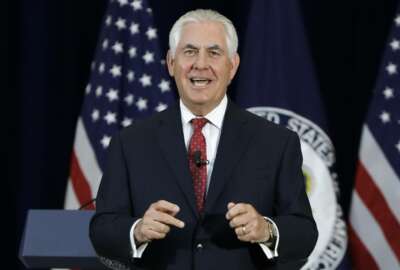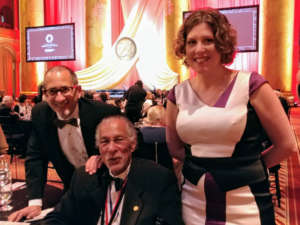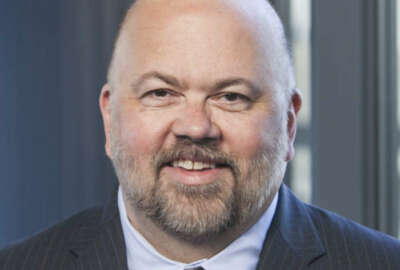
Thank a patent examiner
They toil in relative obscurity to help enable invention and the economic progress it brings.
With all the talk about “innovation” these days, how refreshing it was to meet some actual inventors, people who created something entirely new. This was at the annual gala to induct science and technology superstars into the National Inventors Hall of Fame. It took place Thursday evening at the National Building Museum. The presenting sponsor is the U.S. Patent and Trademark Office, whose thousands of examiners toil in relative obscurity to decide on patent applications.
I walked up to one elderly gentlemen at one of those stand-up cocktail tables. He had a ribbon and medal adorning his dinner jacket, indicating he was already an inductee. “What did you invent?” I asked. Ronald Lewis replied casually, “The catalytic converter.” Whoa, the gadget that’s somewhere north of the tailpipe in every car and truck! The device that cleared smog from American cities. Actually, he explained, he received a patent for a part of the converter, the internal substrate that provides the surface area to which the catalyst is applied. Sounds simple. It wasn’t. But it made such converters practical for automobile use.
By the way, when doing this work, Lewis was employed by Corning Glass. It’s not in Silicon Valley, but rather in Corning, New York. Can’t picture it? It’s just down the road from Painted Post.
The inventor of catalytic converting itself, Eugene Houdry, is also an inductee.

I asked the CEO of the National Inventors Hall of Fame, Michael Oister, how they decide who gets in. There’s a selection board, but before people get that far they’ve already received patents. “The Patent and Trademark Office does our homework for us,” he said.
You can read this online thanks in part to Akamai Technologies. Its content delivery network helped make the internet explosion itself more than 20 years ago possible. Co-founders Tom Leighton (an MIT professor at the time) and Daniel Lewin (an Israeli-born MIT student) were inducted. But Lewin couldn’t make it to the gala. His son Eitan, a junior in college now, attended in his stead. He told me his dad died back in 2001. Danny Lewin was in fact killed aboard American Airlines flight 11 on 9/11, stabbed to death before the terrorists steered the plane into the north tower.
USPTO press secretary Paul Fucito introduced Producer Lauren Larson and me to Hall of Fame member James West, formerly of Bell Laboratories and co-inventor of the electret microphone — a small piece of technology in the heart of nearly every type of microphone, including the one that puts my own voice on the air every day.
The government has a few inventors of its own. Frances Ligler was inducted for her work at the Naval Research Laboratory on bio-optical sensors. Posthumously, former Agricultural Research Service chemist Allene Jeanes was inducted for her invention of xanthan gum, some of which you will probably eat today.
Leadless solder that makes electronics safer, electrically erasable programmable read-only memory (EEPROM) that makes smartphone possible, drywall, a special bucket that makes aerial firefighting more effective: inventors of these products also made it into the hall.
Behind them all stands an unsung hero in the form of a patent examiner. Examiners have large workloads, face regular challenges to their decisions, and cope with backlogs and pressure. But the output of their work is essential to incentivize invention and to operation of the economy.
The host at the gala, popular television correspondent Mo Rocca, interviewed a young girl who had attended several summers worth of a program called Camp Invention. She said that before going, she thought Steve Jobs invented the iPhone. Now, she said, she understands that many, many people engineered elements of the smartphone.
Each one has a patent. To be sure, patents engender infringement cases of epic proportions. So-called patent trolls remain at odds with people and companies that produce things. But no one would argue that patents, and the people who operationalize them, remain essential to progress.
View a photo gallery of the National Inventors Hall of Fame Induction Ceremony.
Copyright © 2025 Federal News Network. All rights reserved. This website is not intended for users located within the European Economic Area.
Tom Temin is host of the Federal Drive and has been providing insight on federal technology and management issues for more than 30 years.
Follow @tteminWFED
Related Stories






